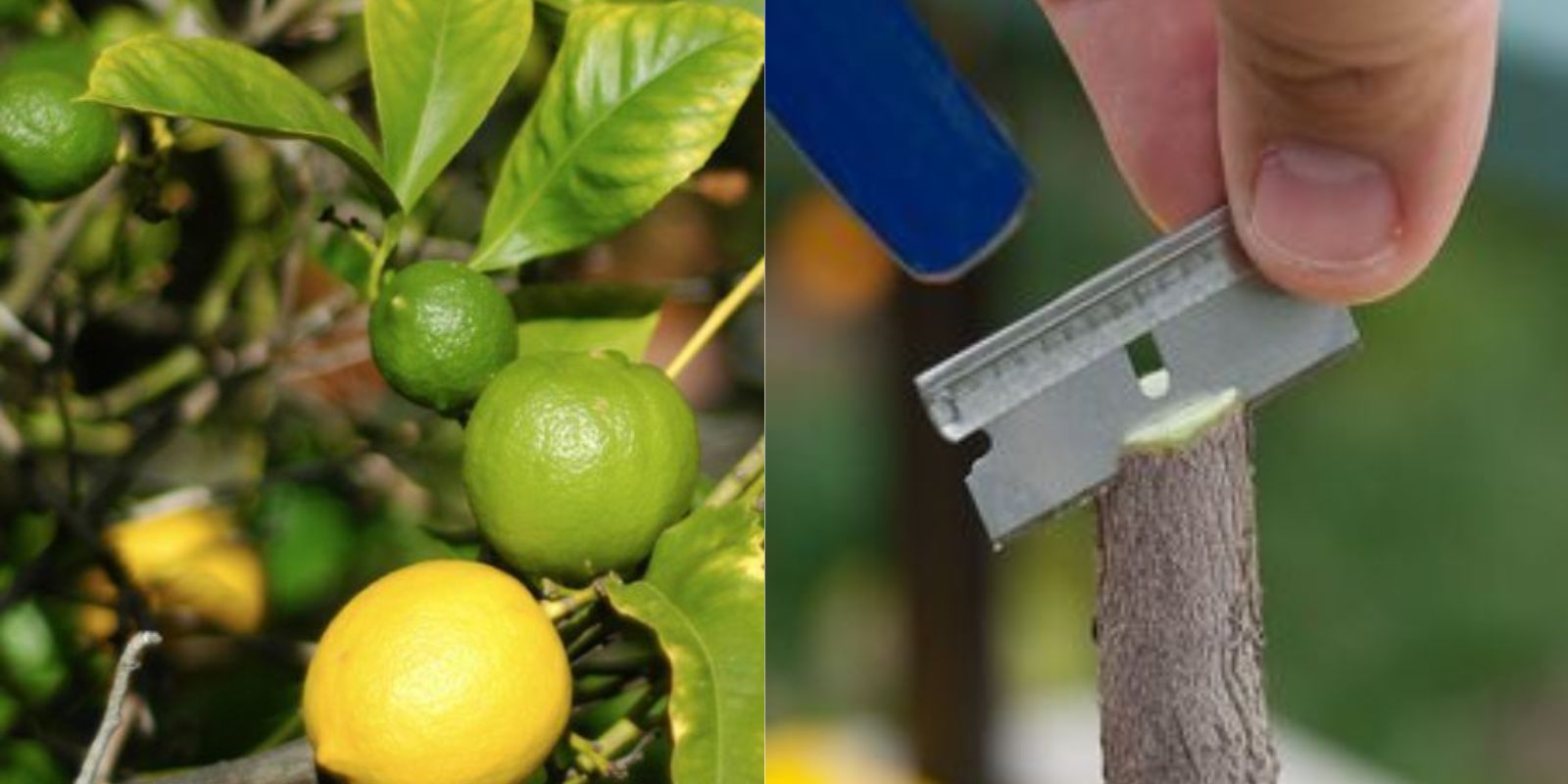Introduction:
Citrus trees, including lemons, oranges, and mandarins, are prized for their flavorful fruits and aromatic foliage. One of the most effective ways to propagate these trees and ensure they produce high-quality fruit is through grafting. This horticultural technique allows gardeners to combine the best traits of two different plants into a single tree, leading to improved fruit quality, disease resistance, and overall plant vigor. In this article, we’ll delve into the steps of grafting citrus trees and provide you with a comprehensive guide to mastering this essential technique.
1. Understanding Citrus Grafting
Grafting involves joining a scion (a cutting from a desirable tree variety) with a rootstock (a root system from another tree) to create a new plant that inherits the characteristics of both. The rootstock provides the root system and overall structure, while the scion contributes the fruiting qualities. Successful grafting depends on proper technique and timing.
2. Choosing the Right Scion and Rootstock
The first step in grafting citrus trees is selecting the right scion and rootstock. Here are some tips:
- Scion Selection: Choose healthy, disease-free wood from a mature tree. The scion should be from a variety known for its desirable fruit traits, such as flavor or size. Ideally, the scion should be taken from the current growing season.
- Rootstock Selection: Select a rootstock that is compatible with the scion variety. Common rootstocks for citrus include Trifoliate Orange, Sour Orange, and Cleopatra Mandarin. The rootstock should be healthy and robust, providing a solid foundation for the grafted tree.
3. Preparing the Grafting Tools
To ensure a successful graft, you’ll need a few essential tools:
- Grafting Knife: A sharp, clean knife is crucial for making precise cuts.
- Pruning Shears: Use these for cutting the scion and rootstock.
- Grafting Tape or Rubber Bands: These will help secure the graft union.
- Grafting Wax or Sealant: To protect the graft and prevent infection.
Before starting, sterilize all tools to prevent the spread of disease.
4. Making the Grafting Cuts
The success of your grafting project depends on making clean, accurate cuts. Follow these steps:
- Cutting the Rootstock: Use your pruning shears to cut the rootstock about 2-3 inches above the soil line. Make the cut as smooth as possible.
- Preparing the Scion: Take the scion wood and make a matching cut. The cut should be of similar diameter to the rootstock. The goal is to create a snug fit between the scion and rootstock.
5. Joining the Scion and Rootstock
Align the cambium layers of the scion and rootstock. The cambium is the green layer of tissue just under the bark that is crucial for the graft union. Follow these steps:
- Matching Cuts: Ensure that the cambium layers of both the scion and rootstock are aligned. This will facilitate the transfer of nutrients and ensure a successful union.
- Securing the Graft: Use grafting tape or a rubber band to hold the scion and rootstock together tightly. The connection should be firm but not so tight that it damages the tissues.
6. Sealing and Protecting the Graft
To protect the graft from drying out and to prevent infection, follow these steps:
- Apply Grafting Wax: Use grafting wax or sealant to cover the graft area. This will help retain moisture and protect the graft from environmental stress.
- Monitor for Signs of Growth: Keep an eye on the grafted tree for signs of new growth. If the graft is successful, you should see new shoots emerging from the scion.
7. Caring for the Grafted Tree
Proper care after grafting is essential for the success of the procedure. Here are some tips:
- Provide Shade and Humidity: Place the grafted tree in a shaded, humid environment to support healing. Direct sunlight can stress the plant, so provide protection during the initial growth period.
- Water Regularly: Keep the soil around the grafted tree moist but not waterlogged. Regular watering will help the plant recover and promote healthy growth.
- Monitor for Pests and Diseases: Check the grafted tree regularly for signs of pests or diseases. Address any issues promptly to ensure the plant’s health.
8. Troubleshooting Common Issues
Even with careful attention, grafting citrus trees can sometimes present challenges. Here are some common issues and solutions:
- Failed Grafts: If the graft does not take, it may be due to poor alignment, improper cutting, or inadequate sealing. Reevaluate your technique and try again with new scion and rootstock.
- Weak Growth: If the grafted tree exhibits weak growth, ensure it is receiving adequate water, light, and nutrients. Check for signs of stress or disease and address any issues.
Motivation:
Mastering citrus grafting can be a rewarding experience that enhances your garden and improves your fruit harvest. With patience and practice, you’ll be able to cultivate healthy, productive trees that provide delicious fruit for years to come. Give grafting a try, and share your results with fellow gardeners to inspire others to explore this valuable horticultural technique. 🌳🍋🍊

